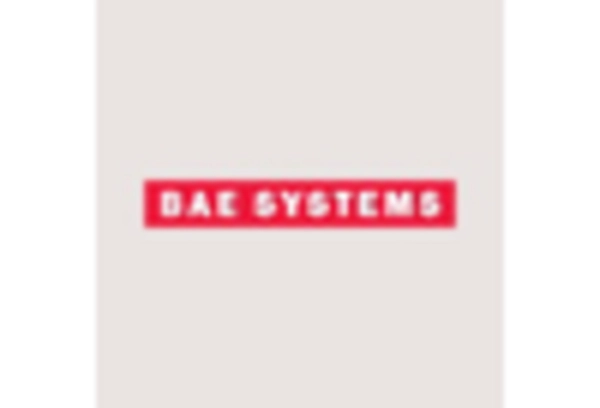Expansion of Civil Aviation
The radar transmitter market is poised for growth due to the expansion of civil aviation in the United States. With the Federal Aviation Administration (FAA) forecasting a steady increase in air traffic, the demand for advanced radar systems to ensure safe and efficient airspace management is rising. In 2025, the number of commercial flights is expected to surpass 10 million, necessitating enhanced radar capabilities for air traffic control. This growth in civil aviation is likely to drive investments in radar transmitter technology, as airports and aviation authorities prioritize safety and operational efficiency. The radar transmitter market stands to gain from this trend, as stakeholders seek to implement state-of-the-art radar solutions to accommodate the increasing volume of air traffic.
Growing Military Expenditure
The radar transmitter market is experiencing a notable boost due to increasing military expenditure in the United States. The Department of Defense has allocated substantial budgets for modernization and technological upgrades, which includes advanced radar systems. In 2025, military spending is projected to reach approximately $850 billion, with a significant portion directed towards enhancing surveillance and reconnaissance capabilities. This trend indicates a robust demand for radar transmitters, as they are integral to various military applications, including air defense and missile tracking. The radar transmitter market is likely to benefit from this sustained investment, as defense contractors seek to develop cutting-edge solutions to meet the evolving needs of the armed forces.
Technological Integration in Smart Cities
The radar transmitter market is influenced by the integration of radar technology in the development of smart cities across the United States. As urban areas increasingly adopt smart infrastructure, the need for advanced radar systems for traffic management, public safety, and environmental monitoring is becoming apparent. In 2025, investments in smart city initiatives are projected to exceed $100 billion, with radar transmitters playing a crucial role in enhancing urban mobility and safety. The radar transmitter market is likely to see a surge in demand as municipalities and private sector players collaborate to implement innovative radar solutions that support the goals of smart city development.
Increased Focus on Environmental Monitoring
The radar transmitter market is being driven by an increased focus on environmental monitoring and disaster management in the United States. Government agencies and private organizations are investing in radar systems to track weather patterns, monitor natural disasters, and assess environmental changes. In 2025, funding for environmental monitoring initiatives is projected to reach $5 billion, highlighting the importance of radar technology in these efforts. The radar transmitter market is likely to see growth as stakeholders recognize the value of radar systems in providing real-time data for effective decision-making and response strategies in environmental management.
Emerging Applications in Automotive Industry
The radar transmitter market is witnessing growth due to emerging applications in the automotive industry, particularly with the rise of autonomous vehicles. As manufacturers invest in advanced driver-assistance systems (ADAS), radar technology is becoming essential for features such as adaptive cruise control and collision avoidance. The automotive sector is expected to invest over $30 billion in radar technology by 2025, indicating a strong demand for radar transmitters. This trend suggests that the radar transmitter market will benefit from the automotive sector's shift towards automation and enhanced safety features, driving innovation and development in radar solutions.
















Leave a Comment